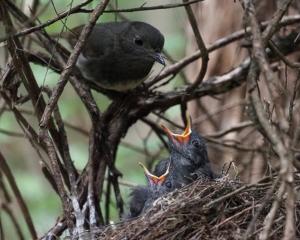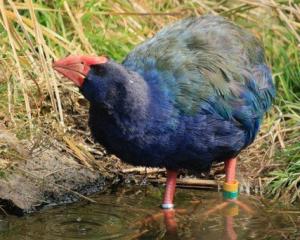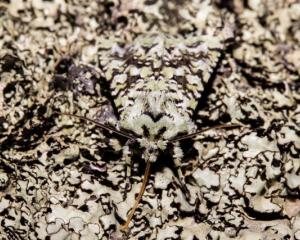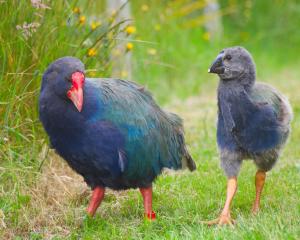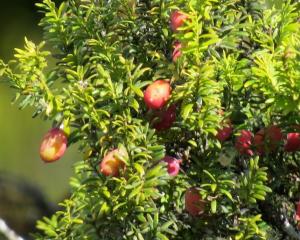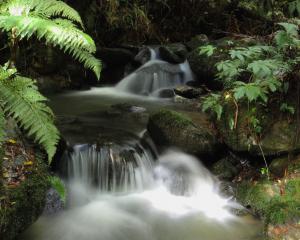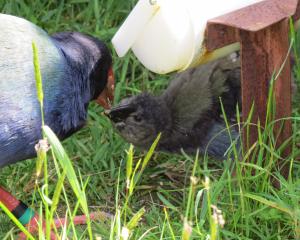Unlike other kakapo, Sirocco loves humans. This is what makes him an outstanding ambassador for his very rare species.
My job as Sirocco's "minder" while he is at Orokonui Ecosanctuary must be one of the most unusual public awareness assignments in nature conservation - not to mention a privilege.
When I make my visits to his enclosure during the day, I feel like I'm being watched. But I can't see him.
Kakapo are nocturnal birds so he has a den for sleeping in as well as a small run that leads into a 400sq m enclosure in the rich Orokonui cloud forest. It is good foraging country for a kakapo.
The enclosure, 20m sq, is built of non-treated plywood to a height of 2m.
Kakapo are great climbers and the fence is located so that Sirocco, flightless like all of his kind, cannot jump over it from an overhanging tree.
As I do my cleaning work near his den I may spot him in a tree. He is incredibly well camouflaged. His sleepy eyes may be quietly watching me. This prehistoric bird remains statue-still as I carry on picking up bits of apple, kumara and pellets strewn over the forest floor.
It sometimes looks like I missed out on a good party the night before, but I am sure there is only one bird in here that is being fed.
On my way out I go over to say hello to Sirocco, who is the star for the moment of Orokonui's amazing birdlife.
His eyes follow me but he does not move as I reach up to offer my hand for him to inspect.
There is no response so I leave him to his slumber.
When I return at night before the first tour I meet a totally different bird.
Sirocco has just woken up and is ready to go into the viewing area.
He jumps out, races to his favourite log and eagerly awaits the arrival of his human friends.
No doubt about it, he loves humans.
As a little chick he developed breathing problems and had to be removed from his nest and hand-reared.
His siblings were healthy and remained with their mother, Zephyr.
Thus Sirocco became imprinted on humans at an early age and even now, at 14 years old, he prefers the company of humans over his own kind.
Department of Conservation staff have tried everything over the years - from "avoid any contact if you see Sirocco" to "run away from him if you see him".
But Sirocco would actually run after humans and hang out at the hut on Codfish Island, off the northwest coast of Stewart Island, where he was born.
Staff pulled curtains whenever he hopped up on the windowsill to look in.
They would try to ignore him running around on the roof of the ranger's house and when he threatened to destroy the ranger's vegetable garden.
At sexual maturity, Sirocco established a track-and-bowl system on Codfish Island.
Everyone thought there was hope for Sirocco to contribute to the population by breeding with a kakapo. But unlike other male kakapo, which build bowls on the top ridges of the island to attract females, Sirocco did not go far. His system was between the hut and the toilet - a cunning location!
If you needed to go to the toilet in the night, you could expect to be jumped on by a frisky Sirocco.
Or maybe you would be lucky and he would target only your gumboots.
Sirocco's love for humans has now been turned around to his - and our - advantage.
He gets to see human company for a few months every year, but not in the breeding season as he is too dangerous for his minder.
So come and see what Sirocco is up to at Orokonui - see what he eats, how he walks and how much he loves performing when he is in the spotlight!
• Karin Luwig, a master's graduate in zoology (South Island saddleback song patterns) with the University of Otago, looked after Sirocco on Ulva Island (Stewart Island) in 2009. She is Sirocco's "minder" while he is staying at Orokonui Ecosanctuary from September 2-27.
Wild Ways runs on the first Saturday of the month.



